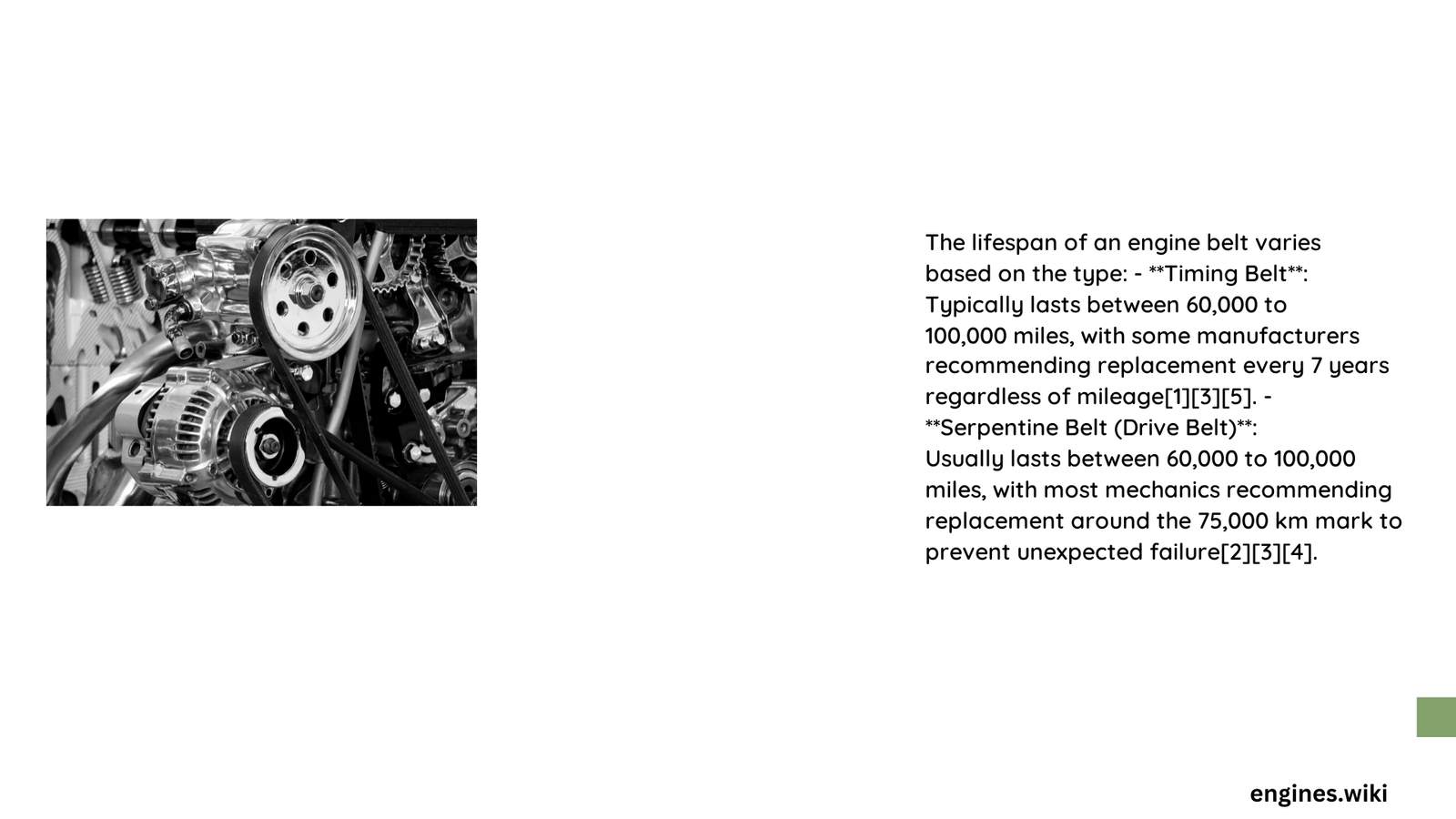Engine belts are critical components that power various systems in your vehicle, with lifespans typically ranging from 60,000 to 100,000 miles. Understanding their durability, maintenance requirements, and potential failure points can save vehicle owners significant repair costs and prevent unexpected breakdowns. This comprehensive guide explores the intricate details of engine belt lifespan, providing insights into timing and serpentine belt performance.
What Determines the Average Engine Belt Lifespan?
Factors Influencing Belt Durability
Engine belt lifespan depends on multiple interconnected factors:
- Environmental Conditions
- Temperature extremes
- Humidity levels
-
Exposure to chemicals and oils
-
Driving Habits
- Frequency of short trips
- Vehicle load
-
Driving terrain
-
Maintenance Practices
- Regular inspections
- Proper tension adjustments
- Timely replacements
| Belt Type | Average Lifespan | Recommended Replacement Interval |
|---|---|---|
| Timing Belt | 60,000-100,000 miles | 60,000 miles or 48 months |
| Serpentine Belt | Up to 100,000 miles | 7 years or visible wear signs |
How Do Different Engine Belts Perform?

Timing Belt Performance
Timing belts are crucial for synchronizing engine components. Their lifespan typically ranges between 60,000 to 100,000 miles, with manufacturers recommending replacement every 48-60 months.
Key Performance Indicators:
– Consistent engine timing
– Minimal noise during operation
– No visible wear or glazing
Serpentine Belt Characteristics
Serpentine belts power multiple vehicle systems, including:
– Power steering
– Air conditioning
– Alternator charging
Wear Detection Methods:
– Visual inspection for cracks
– Listening for squealing sounds
– Checking belt tension and flexibility
What Are the Risks of Delayed Belt Replacement?
Potential Consequences of Neglect
- Timing Belt Failure
- Engine component damage
- Potential valve and piston interference
-
Costly repairs exceeding $1,000
-
Serpentine Belt Breakdown
- Loss of electrical system functionality
- Engine overheating
- Potential roadside breakdowns
When Should You Replace Your Engine Belts?
Recommended Replacement Strategies
- Follow manufacturer’s recommended intervals
- Inspect belts during routine maintenance
- Replace at first sign of significant wear
- Consider proactive replacement in high-stress environments
Expert Maintenance Tips
- Schedule regular professional inspections
- Monitor belt condition during oil changes
- Keep maintenance records
- Use high-quality replacement belts
- Address minor wear before catastrophic failure
Conclusion
Understanding engine belt lifespan requires a holistic approach combining manufacturer guidelines, driving conditions, and proactive maintenance. By investing time in regular inspections and timely replacements, vehicle owners can prevent costly repairs and ensure reliable performance.
